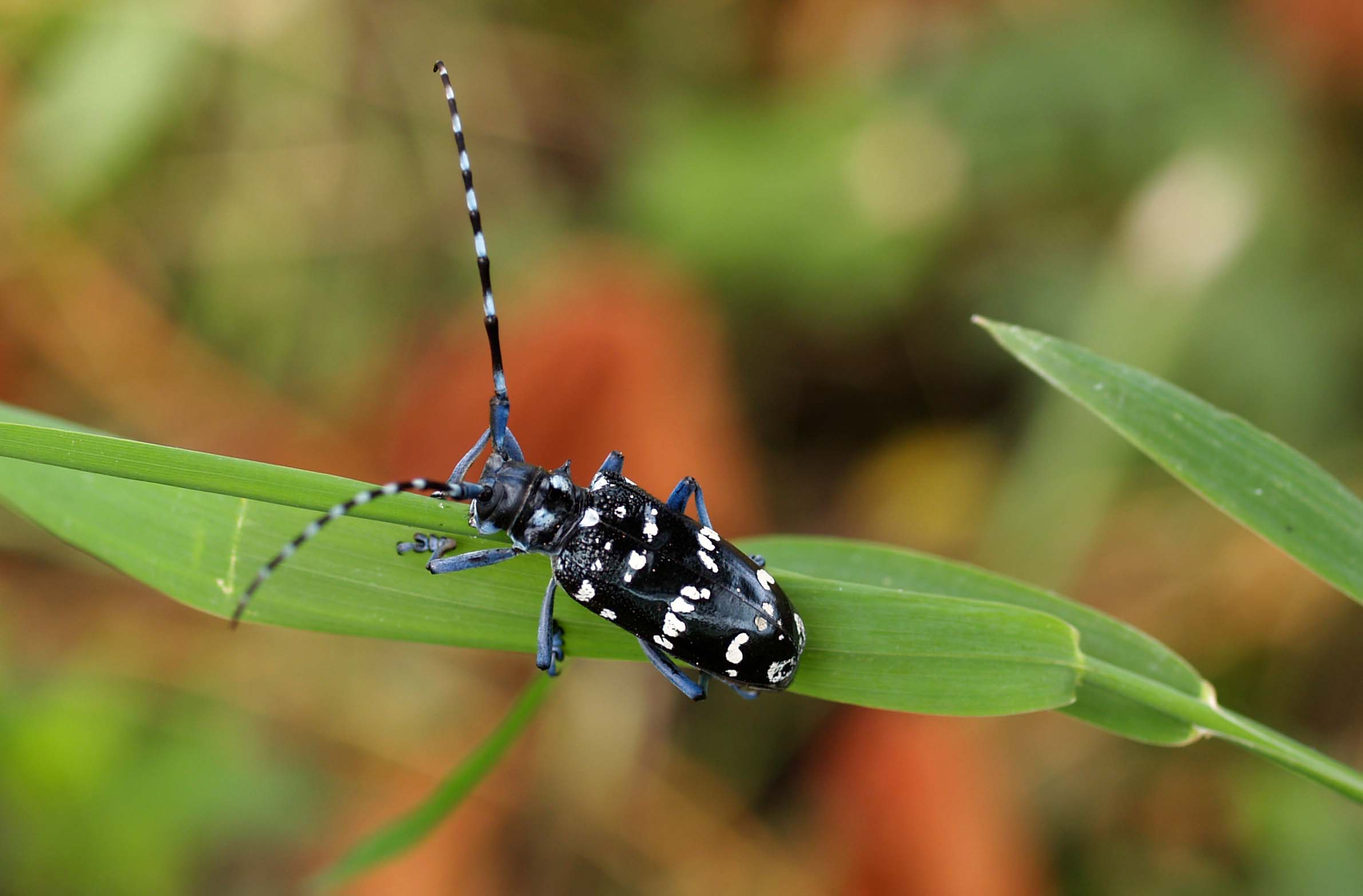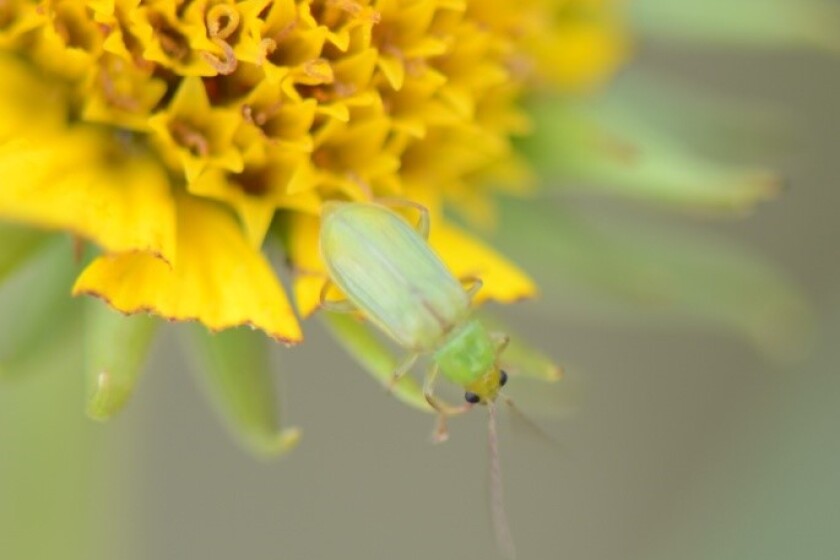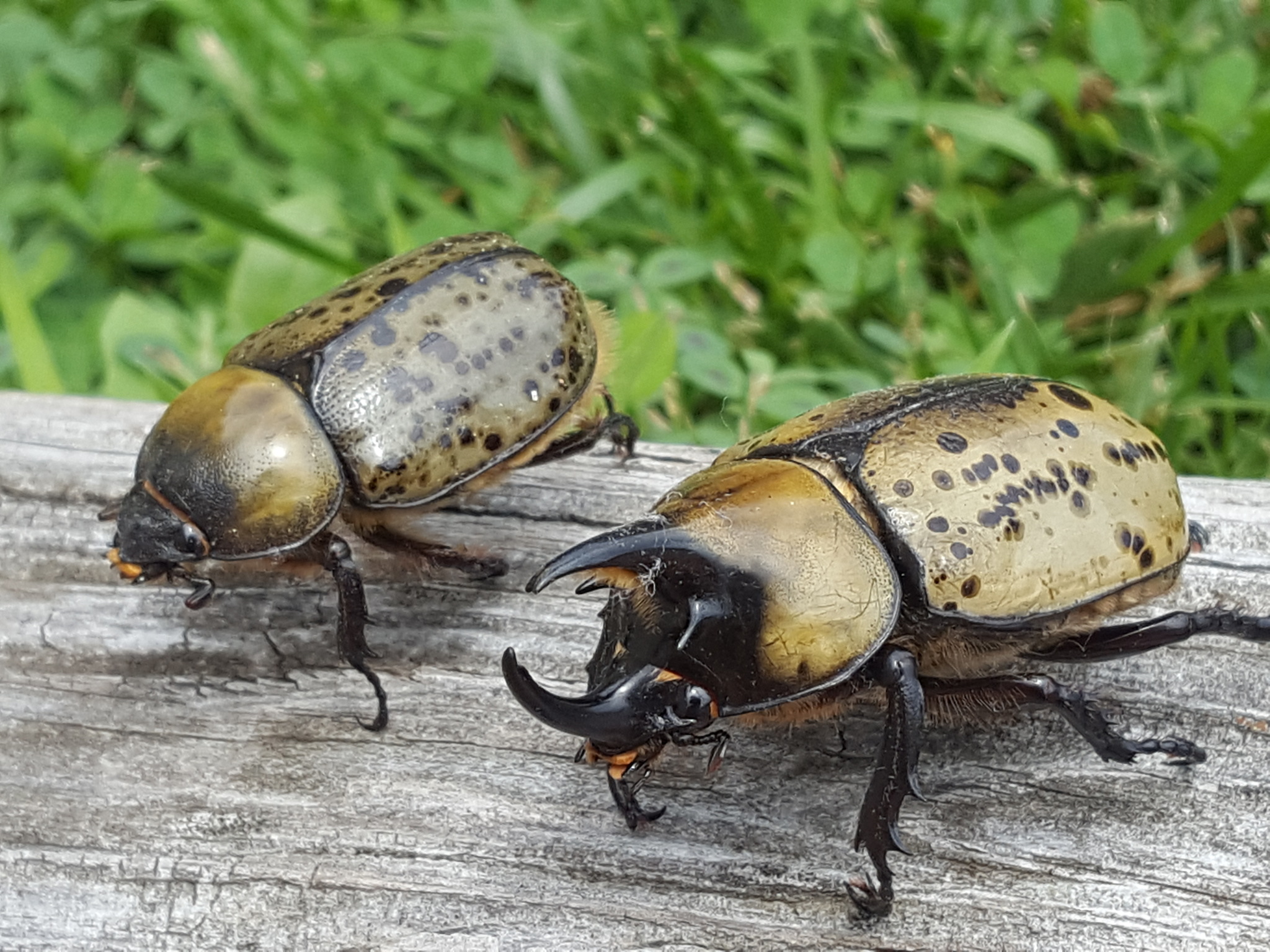Beetles are a diverse group of insects that can be found in almost every habitat on Earth. They come in a wide range of colors, shapes, and sizes, and play important roles in many ecosystems.
In this article, we will focus on brown beetles and explore some of the different types that exist. From the Northern Corn Rootworm Beetle to the Eastern Hercules Beetle, the Grapevine Beetle, and the Long-Horned Beetle, we will discover 9 types of brown beetles. We will also learn about other types of beetles that are brown in color, such as the June Beetle, Ground Beetle.
You are reading: Discover Types Of Brown Beetles

9 Types Of Brown Beetles
Northern Corn Rootworm Beetle

The Northern Corn Rootworm Beetle, also known as Diabrotica barberi, is a species of beetle that is a major pest of cultivated corn in North America. The adult beetles feed on the foliage, pollen, silks, and tassels of corn plants, while the larvae feed exclusively on the roots of corn.
The Northern Corn Rootworm Beetle is the most common species found on corn in Eastern Canada. The eggs of this beetle remain dormant in the soil through fall and winter until late spring/early summer when the white, threadlike larvae emerge to begin feeding on corn roots.
The life cycle of the Northern Corn Rootworm Beetle is similar to that of the Western Corn Rootworm Beetle, except that the Northern Corn Rootworm Beetle has not been shown to lay eggs in soybean fields.
Certain populations of this species have evolved a resistance to crop rotation through prolonged diapause. If the field averages two or more corn rootworm larvae per plant, postemergence management of corn rootworm adults is recommended.
Eastern Hercules Beetle

The Eastern Hercules Beetle, also known as Dynastes tityus, is one of the largest insects in the United States. The males can reach a length of 7 inches and have large horns on their heads, hence the common name rhinoceros beetles. Females, on the other hand, do not have horns.
The Eastern Hercules Beetle can be found in hardwood forests in the eastern half of the United States, and has been recorded as far north as Illinois and New York state.
These large beetles can be found across the southern U.S. from Florida to Texas. The Western Hercules Beetle, Dynastes granti, is found in Arizona and Utah, and Dynastes hyllus is found in Mexico, as far north as the state of Tamaulipas.
The Eastern Hercules Beetle is a type of beetle in the family Scarabaeidae, the same family as June beetles, Japanese beetles, and dung beetles.
The larvae of the Eastern Hercules Beetle are grub-like and can get as big as an adult’s finger. After mating, the females burrow into the ground and lay eggs.
Grapevine Beetle
The Grapevine Beetle, also known as Pelidnota punctata, is a species of beetle in the family Scarabaeidae, subfamily Rutelinae. This beetle is commonly found in the north and central United States and eastern Canada.
The Grapevine Beetle is a type of Scarab beetle and shares a similar appearance to the Japanese Beetles and June Beetles. The adult beetle eats the leaves and fruit of grapevines, both wild and cultivated, although it is not normally a major pest of vineyards. They lay eggs in rotten wood, tree stumps, and other decaying organic matter.
The larvae of the Grapevine Beetle are large grub worms that burrow deep into the ground, where they overwinter until spring. In the spring, they slowly make their way back to the surface, where they feed on rotting wood.
Read more : The Top 10 Biggest Spiders Crawling Around The United States
The Grapevine Beetle is characterized by a tan color or a darker shade of brown, and their main distinguishing feature is the presence of dots on their elytra and thorax.
Long-Horned Beetle
Long-horned beetles, also known as longhorn beetles or longicorns, are a large family of beetles with over 35,000 species described. Most species are characterized by extremely long antennae, which are often as long as or longer than the beetle’s body.
The long-horned beetles are divided into several subfamilies, including the Cerambycidae family. The Cerambycidae family is a large and diverse group of beetles that includes many species of long-horned beetles. These beetles are characterized by their long antennae, which can be used to identify them.
The larvae of long-horned beetles are often referred to as roundheaded borers and can cause significant damage to trees and other woody plants. Some species of long-horned beetles are economically important for the damage they cause to untreated wood products.
The Asian Longhorned Beetle (Anoplophora glabripennis) is an invasive species of long-horned beetle that feeds on a variety of hardwoods, including maple, boxelder, horsechestnut, buckeye, willow, and elm. The Asian Longhorned Beetle is a major pest of many hardwood trees and is native to China and Korea.
Biscuit Beetles
Biscuit beetles, also known as bread beetles or drugstore beetles, are tiny brown beetles that can be found infesting a wide variety of dried plant products. They are part of the Ptinidae family, which also includes the deathwatch beetle and furniture beetle.
Biscuit beetles are closely related to, and often mistaken for, the Common Furniture Beetle (woodworm) due to their physical similarities. These beetles are not harmful to human health, but they can contaminate food sources and storage areas with feces or eggs.
Biscuit beetles are attracted to areas where dried food is stored, such as flour, pasta, grains, and biscuits. They lay eggs in rotten wood, tree stumps, and other decaying organic matter.
The larvae of biscuit beetles are white, crescent-shaped, and grub-like. If you suspect an infestation of biscuit beetles, it is recommended to get an expert in to make sure the pest is correctly identified. The most effective method of ridding a home of this beetle is to try to discover the source of the infestation.
Larder Beetles
Larder beetles, also known as Dermestidae, are a family of beetles that are commonly referred to as skin beetles, hide or leather beetles, carpet beetles, and khapra beetles. They are small brown beetles that are typically 1/3 to 3/8 of an inch long.
The larvae of the larder beetle are longer than the adult and are covered in reddish-brown or black setae. They have two back-curved, spine-like appendages on the posterior end. The larvae of the black larder beetle have less strongly curved appendages.
Mature larvae of both species tend to bore into hard substrates such as wood, cork, and plaster to pupate. Larder beetles are infrequent household pests that feed on raw skins and hides.
Adult larder beetles are generally dark brown with a broad, pale yellow spotted band across the upper portion of the elytra. There are three black dots arranged in a triangle shape on each wing.
The sternum and legs of the larder beetle are covered in fine, yellow setae. Adult larder beetles are typically found outdoors in protected areas during the winter, but during the spring and early summer, they enter buildings. Females lay approximately 135 eggs near a food source, and the eggs hatch in about a week.
Stag Beetles
Stag beetles are a family of about 1,200 species of beetles in the family Lucanidae, currently classified in four subfamilies. They are one of the most spectacular insects in the UK and are known for their large jaws that look just like the antlers of a stag.
The male beetles use their oversized mandibles to wrestle each other for favored mating sites in a way that parallels the way stags fight over females. Fights may also be over food, such as tree sap and decaying fruits. Despite their often fearsome appearance, they are not normally aggressive to humans.
During a battle between two males, the main objective is to dislodge its opponent’s tarsal claws with its mandible, thus disrupting their balance. Male stag beetles are generally inefficient runners and are very slow in flight.
Read more : 4 Types Of Fish Scales And Why Fish Need Them
The larvae of stag beetles are large white grubs with an orange head, usually found underground in rotting tree stumps and roots. They feed on dead wood for several years as they grow and develop before finally transforming into an adult beetle.
Stag beetles are a priority species for conservation in the UK, due to their range contracting over time and continuing loss of habitat.
Weevils
Weevils are a type of beetle belonging to the superfamily Curculionoidea, known for their elongated snouts. They are usually small, less than 6 mm in length, and herbivorous.
There are approximately 97,000 species of weevils known, with most of them in the family Curculionidae (the true weevils). Weevils are considered pests because of their ability to damage and kill crops.
Some of the most common types of weevils that infest pantries and cupboards are rice weevils (Sitophilus oryzae), granary or wheat weevil (Sitophilus granarius), and maize weevil (Sitophilus zeamais).
Weevils enter buildings by crawling through cracks or openings around foundations, doors, and windows. They do not harm people or pets, or damage buildings or property, or infest food products.
Weevils are a temporary nuisance, and keeping them out is the best control method. Caulking cracks and ensuring snug-fitting screens and doors can reduce the number of weevils that may enter a building.
Weevils are found worldwide and are commonly seen in gardens and fields. They often crawl into homes through openings or cracks in doors, windows, or the foundation.
May Beetles (June Bugs)
May beetles, also known as June bugs, are a type of beetle in the genus Phyllophaga, which is a very large genus of New World scarab beetles in the subfamily Melolonthinae. They are nocturnal and are attracted to lights at night.
May beetles are usually brown, rusty, or black, without patterns such as spots or stripes, and rather hairy beneath. They are found throughout North America, including about 86 species in eastern North America.
The larvae of May beetles are well-known to anyone who digs in the soil, and are often referred to as “white grubs”. May beetles are pests of turfgrass, ornamentals, Christmas trees, cranberries, and certain vegetable and field crops.
The adults have been documented to cause foliar damage to ornamental plants, such as oaks and other trees. The larvae feed on grass, broadleaf weed, tree and shrub roots, and mature in the soil. Depending on where you live in the country, the adults are called May beetles, June beetles, or June bugs.
FAQS
1. How many types of brown beetles are there?
There are many types of brown beetles, but this article focuses on 10 types, including the Northern Corn Rootworm Beetle, Eastern Hercules Beetle, Grapevine Beetle, Long-Horned Beetle, Biscuit Beetle, Larder Beetle, Stag Beetle, Weevils, and May Beetles (June Bugs).
2. Are brown beetles harmful to humans?
Most brown beetles are harmless to humans, but some can be pests that damage crops or infest stored food products. Biscuit beetles and larder beetles are two types of brown beetles that can infest stored food products.
3. How can I get rid of brown beetles in my home?
The best way to get rid of brown beetles in your home is to identify the source of the infestation and remove it. Caulking cracks and ensuring snug-fitting screens and doors can reduce the number of weevils that may enter a building.
4. What do brown beetles eat?
Brown beetles have a wide variety of dietary needs. Some feed on plants and fungi, while others feed on animal and plant debris. Some types of brown beetles, such as the Northern Corn Rootworm Beetle, feed on corn plants, while others, such as the Grapevine Beetle, feed on grapevines.
5. Are brown beetles found all over the world?
Yes, brown beetles are found all over the world, in almost every habitat except the sea and the polar regions. There are approximately 97,000 species of weevils known, with most of them in the family Curculionidae (the true weevils).
Source: https://petstutorial.com
Category: Animals










